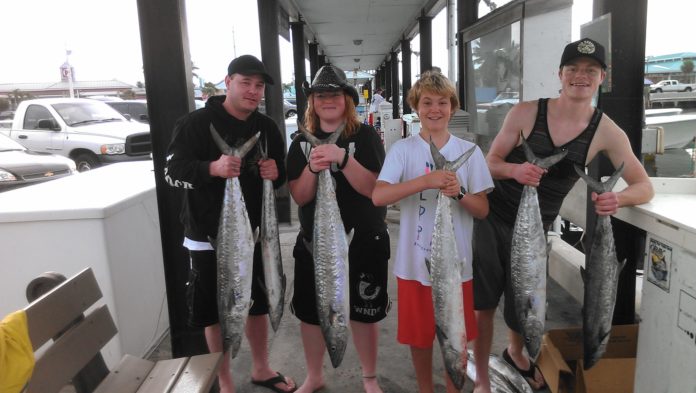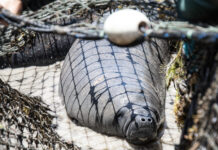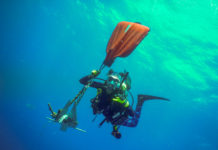As a kid, I can remember watching my father use a “diamond jig” to catch bluefish and stripers off of Eatons Neck Light in Northport, N.Y. I always thought it looked like an awful lot of work but, man, was it effective. I find myself in the same shoes today but with a slightly different tool, the “vertical jig.” I often wonder how many more fish he would have caught if he had this updated technology. The variety of fish that can be taken on one of these jigs is endless. The best part is they come in a variety of colors, shapes and sizes and thus are always a perfect excuse to head to the tackle store. Again.
The sporadic motion created by these lures is purely irresistible to just about every fish out there. This week we have been putting in a lot of time on the reef and catching a lot of snapper. After you have caught enough for dinner, or reached your limit, what’s next? I like to venture out to the wrecks and drop a few jigs. The jig is shaped in a way that it darts and flutters like an injured baitfish on the way down. They come in different weights, which allow them to be used in any depth. They get a lot of bites on the way down as well as the retrieve. The value of using the vertical jig is that you’re covering the entire water column making your jig vulnerable to every fish passing through. When the jig hits the bottom you have a starting chance at grouper, mutton snapper, amberjack, and other wreck dwellers. As the jig works its way up you begin to target mid-range fish: lesser amberjacks, almaco jacks, cero mackerel, kingfish and others.
Don’t let the name fool you; the vertical jig can also be cast and trolled. There is a solid ring on the front of the jig that allows you to pull the jig forward to become a casting/trolling jig and works just as well. You can cast them a country mile to a school of fish breaking on the surface. I also like to keep one handy when I am trolling for dolphin (mahi). When you find that piece of debris that is holding dolphin, don’t leave it before you send a jig deep for the wahoo lurking down there.
The jig is tied to a leader of monofilament or light cable for toothy fish. I don’t like to use wire because I personally think it takes away from the action of the lure and also fouls very easily causing the wire to kink. I use braided line for vert jigs because it has very little stretch and makes the jig more sporadic.
Everyone has his or her favorite jigging method but however you do it, I feel that speed is very important. Don’t give the fish time to inspect your jig. A reactive strike is the goal. (I think fish hit them just because they are annoying.) I send the jig down in free spool and when it hits the bottom I instantly engage the reel and begin the retrieve. I take up about three or four cranks and then jig the rod. Keep repeating this motion until you feel the jig is past the fish or close to the surface. Be careful not to yank the jig out of the water, that can hurt. (We’ve all done it.) Jig harder and faster than you think you should.
It is a lot of work but it can turn a so-so day into one to remember. It’s a funny looking rig and I’m not sure who invented it, but whomever it was did us all proud. Go get some jigs and I hope to see you out there
Capt. Vinny Argiro



























